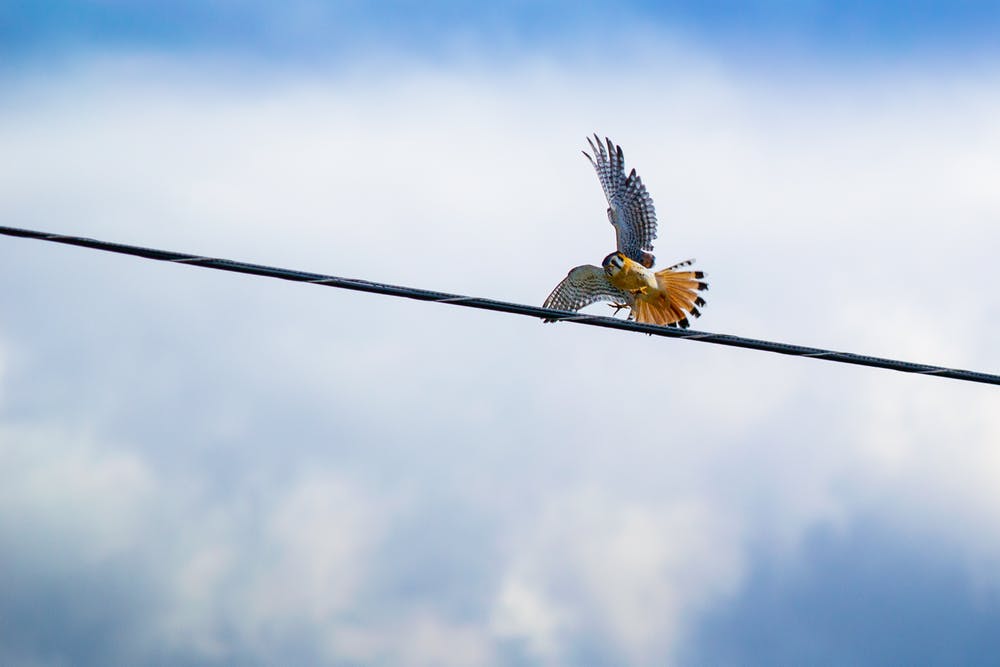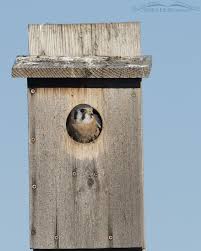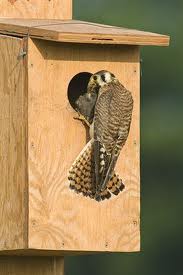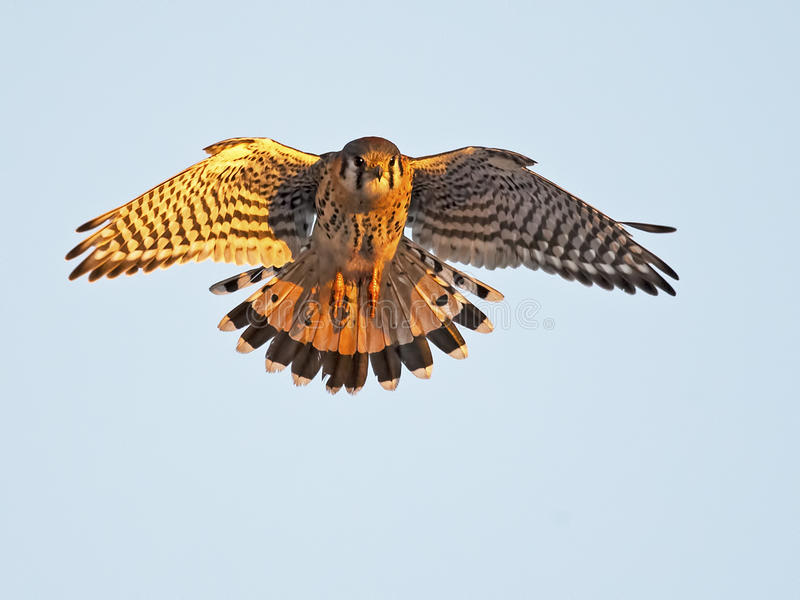by DJ Featherton

The American Kestrel is the smallest of the falcon group in the U.S. and is certainly the most beautiful. These dramatic birds are common to most birders, but otherwise, not commonly known to the many. This is easily the case for lots of small and colorful birds that simply look like an ordinary mourning dove or blackbird on the wire against a bright sky. After identifying this beautiful bird as a falcon, it makes one wonder how we ever missed it!
My father-in-law, who was a good backyard birder, kept asking where we see these falcons that we talk about. I thought he knew, so we went to a large county park that had open fields of short grasses. This was a favored place for he and Mom to do an afternoon walk and watch for meadowlarks. Little did he know that there was a colorful raptor perched on the telephone wire above surveying the field for the slightest movement of an insect or frog or mouse. We then watched the repeated dives and hovering in the air as the falcon would re-aim his attack. I said, “If you look, you will see them.” He said, “If you know what to look for, you will see them.” We laughed.


The American Kestrel is about the size of a robin or blue jay, but just as aggressive as his bigger relatives. The well-known Peregrine falcon dives at speeds of over 200 mph and is known as the fastest living creature on Earth! Kestrels are beautifully marked. The male’s slate blue head and wings are nicely contrasted with his rusty red back and tail. The female is similar less the slate blue contrasting color. Most distinct is the trademark of all falcons, dark slashes down the face and under the eye that we call “sideburns.” These small raptors are sometimes called “sparrow hawks” and are found throughout Alaska, Canada, all of the U.S., Mexico and Central America. This remains one of my favorites, and well worth some photography.
Here’s the problem. The kestrels’ numbers are in decline in many parts of their range. This includes the northern half and western half of the U,S. but not the southeastern states. Once again, this is due to loss of habitat and good nesting areas. Where we can help is by providing nesting boxes. These are simple in architecture and design, but must meet specific requirements. The box is 14 inches tall and the floor is 10 inches by 11 3/4 inches. The entry hole must be 3 inches in diameter. The suggested height to place the nesting box is no less than 10 feet, and no more than 30 feet. If you want more than one box, they must be at least 250 feet apart for good neighborhood harmony. Go here for specific plans. Interestingly, Kestrels don’t use nesting materials. Ordinarily, the male searches out a number of potential cavities in trees and then shows them to the female who makes the final decision. What a guy!!!


Bird boxes are easy to make at home. If there are any open grassy areas near you, I’m sure your American Kestrel bird box will be a success, and well appreciated as the female’s first choice of living quarters for her soon to be family of chicks. Let’s help the kestrels. Grab your binocs and I’ll see ya out there!

About Birding Binoculars
In my opinion, this company carries an array of binoculars that meet the demands of casual and serious birdwatchers. They know that Birders tend to prefer apertures in the 40mm to 42mm range, which provides good resolution for detection of subtle markings yet keeps the binoculars easily hand-holdable and portable. And magnifying power of 8x is ideal, though some birdwatchers prefer more or less. All of their birding binoculars boast exquisite optics with advanced phase coatings, a streamlined design, and very close focus capability. You won’t find better birding binoculars in any other brand!